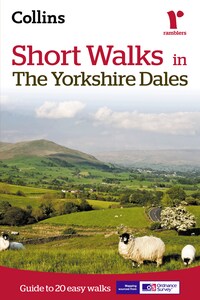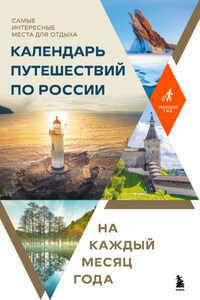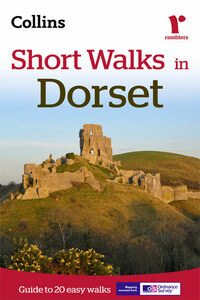Walking in the Yorkshire Dales
People have walked the Yorkshire Dales almost since the first man appeared on our shores. Prehistoric hunters followed regular routes along grassy ridges and across the broad cols connecting individual dales. Later, the Romans built their roads, some of which are now used by modem traffic. Others are still recognisable as stony tracks across the fells. Drovers and packhorsemen, the ancestors of today’s long-distance lorry drivers, created green roads which can be traced for miles across the wild central moors. Corpse roads linking outlying hamlets to sanctified ground miles down the dale still exist but it is perhaps the local footpaths, connecting villages and farmsteads, which will give the most pleasure to a walker in the Dales.
Walking is a pastime which can fulfil the needs of everyone. You can adapt it to suit your own preferences and it is one of the healthiest of activities. This guide is for those who just want to walk a few miles. It really doesn’t take long to find yourself in some lovely countryside. Most of the walks are five miles or less so should easily be completed in under three hours. Walking can be anything from an individual pastime to a family stroll, or maybe a group of friends enjoying the fresh air and open spaces of our countryside. There is no need for walking to be competitive and, to get the most from a walk, it shouldn’t be regarded simply as a means of covering a given distance in the shortest possible time.
What are the Yorkshire Dales ?
The Central Pennines are cut by a series of valleys which have become known as the Yorkshire Dales. Radiating from a watershed on the mass of high ground north and east of Ribblehead, five rivers, the Swale, Ure, Nidd, Wharfe and Aire, eventually flow east into the North Sea by way of the Ouse and Humber. Three others, the Ribble, Lune and Eden, all enter the Irish Sea, to the west, as independent rivers. All have their birth on the gritstone cap of the central moors but, with the exception of the Nidd and Lune, they all flow for at least their middle sections through countryside based upon limestone. As a result, the rivers have carved deep clefts through the soluble limestone rock to reach harder, watertight shales and slates.
Every dale has its own character. In the north, Swaledale is the wildest, a deep-cut gorge below rolling heather moors, joined at Reeth by its even wilder tributary, Arkengarthdale, where the dale begins to take on a gentler aspect. Villages of stone-built cottages line its northern banks. Place names can be traced to the early Viking settlers.
The next east-flowing dale is Wensleydale, the only one which does not take its name from its river, in this case the Ure. Wensleydale was once filled by a glacial lake and its flatter valley bottom and wider aspect is the result. Lush meadowlands feed the dairy cattle which produce milk for the famous Wensleydale cheese. The dale is renowned for its waterfalls but less appreciated features are in its four side dales, all roughly parallel to each other, flowing from the south-west. These often secluded valleys will reward anyone who wants to explore their secrets.
Next is Nidderdale, a little-known dale to the east of Wharfedale, where the strangely-worn shapes of Brimham Rocks cut into the skyline. Nidderdale is not part of the Yorkshire Dales National Park.
Wharfedale and Airedale, with their ease of access from the West Riding, are probably the best known dales. Wharfedale, wooded in its lower reaches, is lined with dramatic limestone formations and attractive villages, a feature echoed by its tributary, Littondale, for all except its sombre headwaters. Airedale’s Malham Cove, an amphitheatre of solid limestone, is an outstanding feature of the Dales. A tributary of the Aire flows from its base – the main river still flows underground at this point. The ravine of Gordale Scar, a ‘roofless’ cave, is close by.









